Top 10 Fastest Growing Trees for Your Landscape
- September 4, 2024
- 0 comment
Creating a lush and vibrant landscape quickly is a common goal for many homeowners and landscapers. Fast-growing trees are an ideal solution, offering quick shade, privacy, and aesthetic appeal. These trees are not only practical but also provide ecological benefits by sequestering carbon, reducing erosion, and improving air quality.
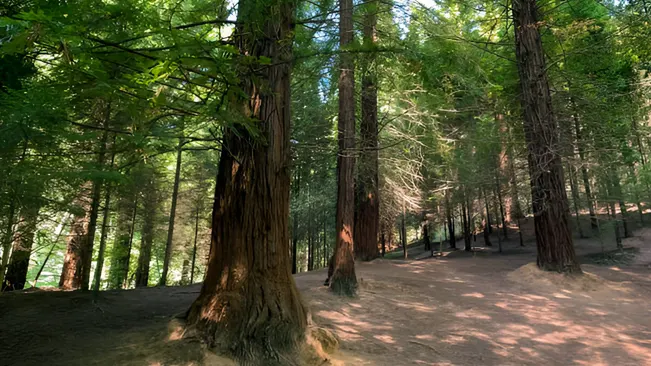
Below, we explore the top 10 fastest-growing trees, detailing their key characteristics, care tips, and ideal uses to help you make an informed choice for your landscape.
List of Top 10 Fastest Growing Trees
1. Hybrid Poplar (Populus deltoides x Populus nigra)
Hybrid Poplar trees are one of the fastest-growing tree species available, with an impressive growth rate of 5-8 feet per year. This rapid growth makes them a popular choice for those looking to establish a quick landscape or provide instant shade. Hybrid Poplars are also known for their versatility and adaptability to a wide range of soil conditions, making them suitable for various environments.
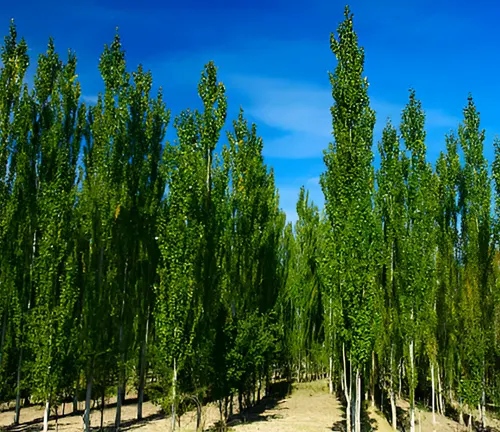
Ideal Uses
- Windbreaks
- Shade trees
- Privacy screens
- Fast-growing shelterbelts for agricultural areas
Care Tips:
Hybrid Poplars thrive best in well-drained soil and require regular watering, especially during their establishment phase. They are relatively low-maintenance but benefit from occasional pruning to maintain their shape and health.
2. Weeping Willow (Salix babylonica)
Weeping Willows are renowned for their graceful, drooping branches that create a picturesque silhouette. These trees can grow 3-8 feet per year, making them one of the fastest-growing species for water-adjacent landscapes. Weeping Willows are particularly well-suited for planting near ponds, streams, or other bodies of water, where they can thrive in moist conditions.
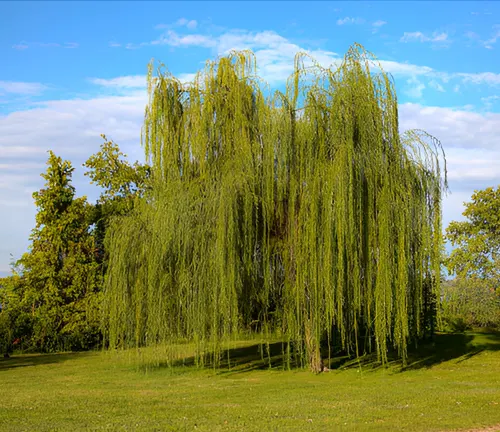
Ideal Uses
- Water-adjacent planting
- Ornamental landscapes
- Erosion control on riverbanks
- Creating tranquil, shaded areas in large gardens or parks
Care Tips:
These trees require ample water and prefer full sun to partial shade. While they thrive in moist environments, they can tolerate some drought once established. Regular pruning can help maintain their iconic shape and prevent disease.
3. Royal Empress Tree (Paulownia tomentosa)
The Royal Empress Tree, also known as the Princess Tree, is one of the most remarkable fast-growing trees, capable of adding 10-15 feet in height each year. This tree is highly valued for its large, heart-shaped leaves and stunning lavender-colored flowers that bloom in spring, making it a striking ornamental addition to any landscape.
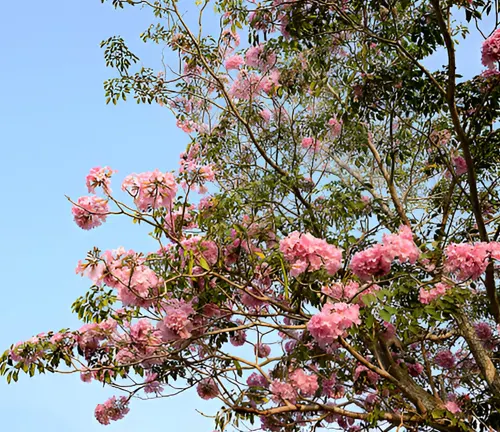
Ideal Uses
- Large landscapes
- Ornamental tree
- Providing quick shade in recreational areas
- Erosion control on slopes due to its extensive root system
Care Tips:
Plant the Royal Empress Tree in full sun and well-drained soil to encourage optimal growth. Given its rapid growth, it’s important to provide enough space for it to expand, as its broad canopy can reach up to 40 feet wide.
4. Thuja Green Giant (Thuja standishii x plicata)
Thuja Green Giant is a popular choice for those seeking a fast-growing evergreen tree. Growing 3-5 feet per year, this hybrid tree is known for its dense foliage and towering height, which can reach up to 60 feet. Thuja Green Giants are commonly used for creating privacy screens or windbreaks due to their rapid growth and ability to form thick, uniform barriers.

Ideal Uses
- Privacy screens
- Hedges
- Windbreaks
- Noise reduction barriers along busy roads or properties
Care Tips:
Thuja Green Giants are low-maintenance and thrive in a variety of soil conditions, though they prefer well-drained soil. They are drought-tolerant once established but benefit from regular watering during dry spells. Minimal pruning is needed to maintain their shape.
5. Leyland Cypress (Cupressus × leylandii)
Leyland Cypress is another fast-growing evergreen, with a growth rate of over 3 feet per year. This tree is often used for creating dense, natural privacy hedges due to its rapid growth and tall, columnar shape. Leyland Cypress trees are also favored for their soft, bluish-green foliage, which retains its color throughout the year.

Ideal Uses
- Privacy hedges
- Noise barriers
- Windbreaks
- Visual screens to block unsightly views
Care Tips:
These trees thrive in full sun and are adaptable to a wide range of soil types, from sandy to clay soils. They require regular watering during the first few years but can tolerate some drought once established. Pruning helps maintain their shape and encourages denser growth.
6. Moringa (Moringa oleifera)
Moringa, also known as the “Drumstick Tree” or “Miracle Tree,” is a fast-growing species that can add 10-16 feet per year. In addition to its rapid growth, Moringa is prized for its edible leaves, seeds, and pods, which are rich in nutrients and have numerous medicinal properties. This tree is well-suited for warm climates and is commonly grown in tropical and subtropical regions.
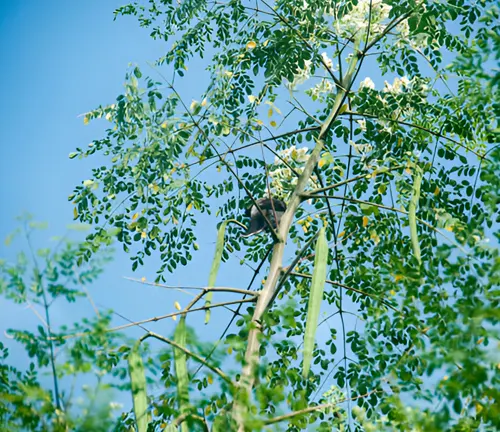
Ideal Uses
- Nutritional gardens
- Fast-growing shade trees in tropical areas
- Agroforestry systems for soil improvement and crop support
- Natural windbreaks and live fencing in tropical climates
Care Tips:
Plant Moringa in well-drained soil and ensure it receives plenty of sunlight. It thrives in warm climates (USDA Zones 9-11) and requires minimal watering once established. Regular harvesting of leaves and pods can encourage continued growth.
7. Dawn Redwood (Metasequoia glyptostroboides)
The Dawn Redwood is a unique deciduous conifer that can grow up to 4 feet per year. This ancient tree species, often referred to as a “living fossil,” is known for its pyramidal shape and bright green, feathery foliage that turns a stunning orange-red in the fall. Dawn Redwoods can reach impressive heights of 100-120 feet, making them a majestic addition to any large landscape.
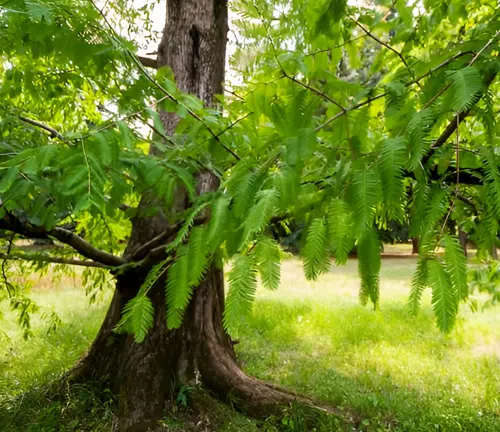
Ideal Uses
- Ornamental planting in large landscapes
- Historical gardens
- Parks
- Restoration projects in wetland or riparian areas
Care Tips:
These trees require full sun and thrive in moist, well-drained soil. They are adaptable to various soil conditions but perform best in environments that mimic their natural habitat, such as riverbanks and lowland areas.
8. Plains Cottonwood (Populus deltoides monilifera)
Plains Cottonwood is one of the fastest-growing native trees in the United States, with a growth rate of 5-13 feet per year. This towering tree can reach heights of 60-80 feet, making it a dominant feature in any landscape. Plains Cottonwoods are commonly found along riverbanks, where they help stabilize soil and provide shade.

Ideal Uses
- Large landscapes
- Riverbank stabilization
- Shade in open areas
- Windbreaks in agricultural settings
Care Tips:
These trees thrive in moist soil and prefer full sun. They are suitable for USDA Zones 3-9 and require ample space to accommodate their large size. Regular watering is essential, especially in drier climates.
9. Fruitless Mulberry (Morus alba ‘Fruitless’)
Fruitless Mulberry is a fast-growing shade tree that can grow 10-12 feet per year. Unlike its fruit-bearing relatives, the Fruitless Mulberry does not produce messy fruit, making it a cleaner option for residential landscapes. This tree is known for its large, dense foliage, which provides excellent shade during hot summer months.
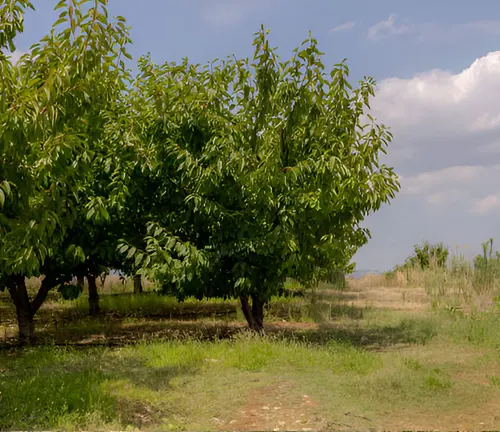
Ideal Uses
- Shaded areas in gardens
- Residential landscapes
- Cooling patios and outdoor seating areas
- Creating natural play areas for children due to its dense, soft foliage
Care Tips:
Plant Fruitless Mulberry in full sun for best growth. This tree is adaptable to a variety of soil types, from sandy to clay, and requires minimal maintenance. Occasional pruning may be needed to manage its size and shape.
10. Autumn Blaze Maple (Acer x freemanii)
Autumn Blaze Maple is a hybrid tree known for its vibrant red fall foliage and rapid growth of 3-5 feet per year. This tree combines the best traits of its parent species, the Red Maple and the Silver Maple, resulting in a hardy, fast-growing tree that is both beautiful and practical for residential landscapes.
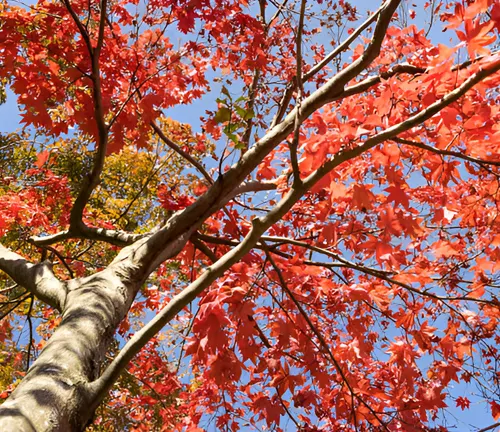
Ideal Uses
- Ornamental planting
- Shade tree
- Fall color displays
- Street or driveway lining for a uniform, colorful landscape
Care Tips:
Autumn Blaze Maples thrive in full sun and are adaptable to a wide range of soil conditions. They require regular watering during their establishment phase and benefit from occasional fertilization to maintain their vibrant foliage.
Conclusion
Fast-growing trees are an excellent option for homeowners and landscapers looking to quickly enhance their outdoor spaces. Whether you need shade, privacy, or simply want to add beauty to your garden, these trees provide quick results and long-term benefits.
By carefully selecting the right tree for your specific environment and following proper care guidelines, you can enjoy a thriving and beautiful landscape for years to come.
Frequently Asked Questions (FAQ’s)
- What are the benefits of planting fast-growing trees?
Fast-growing trees provide immediate benefits like shade, privacy, erosion control, and contribute significantly to air quality improvement. - How fast do fast-growing trees typically grow?
Fast-growing trees can increase their height by 3 to 15 feet annually, depending on their species and environmental conditions. - Are fast-growing trees more susceptible to diseases?
While some fast-growing trees are more prone to diseases due to their rapid growth, many are bred for resistance and require minimal maintenance. - Can fast-growing trees be planted in any type of soil?
Many fast-growing trees are adaptable to various soil types, but most thrive best in well-drained soil conditions specific to their species. - How much maintenance do fast-growing trees require?
The maintenance required for fast-growing trees varies widely, with some needing regular pruning and watering, while others are largely self-sustaining. - Do fast-growing trees have a shorter lifespan?
Generally, fast-growing trees do have shorter lifespans compared to slower-growing species, often living only a few decades. - Are fast-growing trees suitable for small gardens?
Some fast-growing trees can grow too large for small gardens, but there are smaller species or dwarf varieties that are appropriate. - Can fast-growing trees be used for timber production?
Yes, species like Hybrid Poplar are commonly used in timber production due to their rapid growth and ability to mature quickly. - What is the best time of year to plant fast-growing trees?
The ideal times to plant fast-growing trees are during spring or fall, allowing roots to establish before extreme temperatures. - Are fast-growing trees good for wildlife?
Many fast-growing trees support wildlife by providing habitats, food sources, and shelter, making them excellent choices for eco-friendly landscaping.

James Wilson
Forestry AuthorJames Wilson has over 15 years of experience in forestry economics, specializing in sustainable practices, investment opportunities, and financial management. He has contributed to notable publications like "Forestry Today" and "EcoFinance Journal" and is known for providing practical and insightful advice. With a degree in Environmental Economics, James stays updated through continuous learning and active participation in industry discussions. Outside work, he enjoys hiking and nature photography, bringing a well-rounded perspective to his professional role.

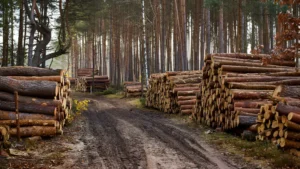
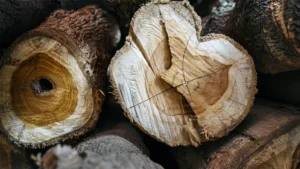

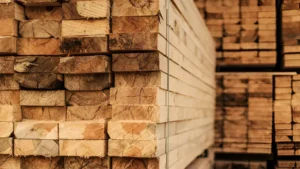
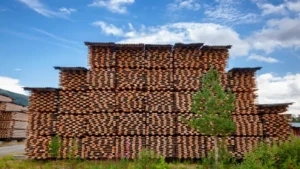




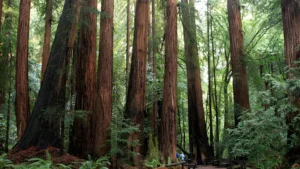
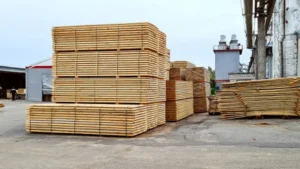
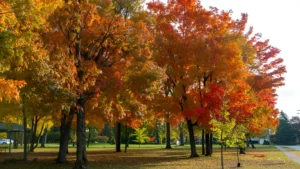
Leave your comment